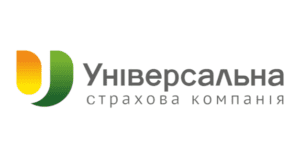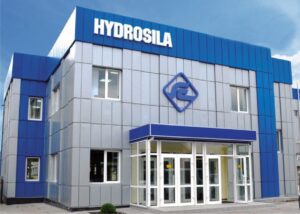
Italy has handed over more than 20 155-mm M109L self-propelled artillery mounts to the Ukrainian army, La Repubblica reports.
“These are armored tracked vehicles with a 155 mm cannon using NATO ammunition. In the last years of the Cold War, Italy produced hundreds of such installations, upgrading the original American model, then they were withdrawn from service at the beginning of the millennium,” the message says.
It notes that these installations will undergo a major overhaul, and then go straight to the front line.
Journalists report that the Ukrainian army will receive from twenty to thirty self-propelled guns, “although the exact number remains top secret.”
The publication adds that these self-propelled guns are part of the latest military aid package, which was agreed by the previous Italian government, Mario Draghi.

President of Ukraine Volodymyr Zelensky had a conversation with the new Prime Minister of Italy, Giorgia Meloni.
“I congratulated Giorgia Meloni on her appointment as Prime Minister of Italy. I’m hopeful for further fruitful cooperation. We discussed Ukraine’s integration into EU and NATO. I told about the current situation in our country and invited her to visit Ukraine,” Zelensky said on Twitter.

The Government of Canada will issue five-year bonds – Ukraine Sovereignty Bonds – to financially support Ukraine, Prime Minister Justin Trudeau said at the XXVII Triennial Congress of Ukrainian Canadians in Winnipeg on Friday.
“Canada remains unwavering in our commitment to support the people of Ukraine in their fight against Putin’s illegal and barbaric invasion, and we will continue to do everything we can to ensure Ukraine has the resources it needs to win. Now, through a bond designated for Ukraine, Canadians can contribute to this critical effort through a new federally backed investment,” Deputy Prime Minister and Finance Minister Chrystia Freeland said in a statement on the Prime Minister’s website.
Trudeau announced that the Government of Canada will issue Ukraine Sovereignty Bonds, which will help the government continue operations, including providing essential services to Ukrainians, like pensions, and purchasing fuel before winter.
The equivalent proceeds from this five-year bond will be channelled directly to Ukraine through the International Monetary Fund’s (IMF) Administered Account. This builds on the Government of Canada’s CAD 2 billion in financial assistance to Ukraine this year, the report said.
According to it, the new bonds will be offered by the participating financial institutions at denominations and rates to be announced shortly.
Those who decide to invest in this bond will actually purchase a regular five-year Canadian government bond backed by Canada’s AAA credit rating. Canada is the first country in the world outside of Ukraine to offer bonds in support of Ukraine for purchase.
To increase pressure on Putin’s regime, Trudeau also announced that Canada is imposing new sanctions on individuals and entities complicit in Russia’s invasion of Ukraine. These new measures will target 35 senior officials of energy entities, including those of Gazprom and its subsidiaries, and six energy sector entities involved in Russia’s ongoing violations of Ukraine’s sovereignty and territorial integrity. “These new measures build on the sanctions we have already implemented against over 1,400 individuals and entities,” he said.
He also announced that Canada intends to impose new sanctions on members of the Russian justice and security sectors, including police officers and investigators, prosecutors, judges, and prison officials, involved in gross and systematic human rights violations against Russian opposition leaders.
Trudeau said that the 39 armoured combat support vehicles (ACSVs) Canada announced for Ukraine in June have started to arrive in Europe, where training for the Ukrainian forces is underway, with the last expected to be delivered end of November. Since February 2022, Canada has committed over CAD 600 million in military assistance to Ukraine. Canada will continue to help Ukraine meet its urgent requirements for military and defence equipment.
The prime minister also said that Canada is allocating $55 million in previously announced funding to the International Federation of Red Cross and Red Crescent Societies, the International Organization for Migration, and the United Nations High Commissioner for Refugees and other humanitarian partners to support winterization initiatives. This includes providing shelter and distributing essential items such as blankets, clothing, heating appliances, and fuel.
In addition, the Prime Minister announced the launch of the Canada-Ukraine Science Partnership, which will invite up to 20 Ukraine-based scientists to come work and live in Canada.
According to the report, streamlining current visa and travel requirements, as of October 18, 2022, close to 315,000 applications have been approved.

A large manufacturer of capping and packaging materials JSC Tekhnologiya (Sumy) in January-September received a net profit of UAH 214.18 million, which is 33.5% less than in the same period of 2021.
According to the company’s non-consolidated financial statements, published on Friday in the information disclosure system of the National Securities and Stock Market Commission (NSSMC), its net income fell by 5% to UAH 1 billion 457 million.
At the same time, the gross profit of Technologiya JSC increased by 22.6% – up to UAH 443.4 million, and UAH 297 million of profit was received from operating activities – 41% more.
According to reports, the company’s expenses under the item “other operating expenses” increased 3.6 times – up to UAH 136.79 million.
According to the company’s statements, in the first half of this year, it reduced its net profit by 6.7 times compared to the same period in 2021, to UAH 16.68 million, while net income decreased by 12.5%, to UAH 824 million.
Thus, in the third quarter of this year, Tekhnologiya’s net profit decreased by 6.5% to UAH 197.5 million, while net income increased by 7% to UAH 632.5 million.
Founded in 1990, Tekhnologiya produces capping and packaging materials, including decorative casings and caps for champagne decoration, label products, packaging for pharmaceuticals, combined material, and polyethylene film. The export geography included more than 60 countries.
The beneficiaries of the company are Vladimir Zayets (70%) and Pole Krzysztof Gzhondzel (30%).
Technologia Group’s global offices are located in the UK (TEO UK Packaging Limited), Poland (MUZEL LTD), Italy (TEO ITALY SRL).

Universalna Insurance Company (Kyiv) collected UAH 945.9 million in gross insurance premiums in January-September 2022, which is 6.7% more than in the same period last year, according to the website of the rating agency “Standard Rating”.
At the same time, it is indicated that the agency confirmed the credit rating / financial stability (reliability) rating of IC “Universalna” at the level of “uaAAA” on the national scale based on the analysis of work for the specified reporting period.
According to the published data, income from individuals increased by 19.97% to UAH 415.740 million over six months, and from reinsurers, on the contrary, decreased by 51.83% to UAH 0.946 million. Despite the increase in premiums from individuals, according to the results of the first nine months of 2022, legal entities dominate the company’s client portfolio. At the same time, according to the results of activities during the first three quarters of 2022, the largest share of premiums (more than 36%) came from voluntary land transport insurance (CASCO).
Insurance payments sent to reinsurers for the nine months of 2022 compared to the same period in 2021 decreased by 6.67% to UAH 148.722 million. Thus, the coefficient of participation of reinsurers in insurance premiums decreased by 2.25 percentage points. up to 15.72%.
In the analyzed period, the insurer’s net premiums increased by 9.63% to UAH 797.206 million, while earned premiums showed an increase of 13.90% to UAH 817.514 million.
The volume of insurance payments made by IC Universalna for the first three quarters of 2022 decreased by 11.26% to UAH 240.593 million compared to the same period in 2021. Thus, the level of payments decreased by 5.15 p.p. up to 25.43%.
In the first nine months of 2022, the financial result from operating activities amounted to UAH 178.169 million, which is 5.14 times higher than in the nine months of 2021, while the insurer’s net profit increased 5.2 times to UAH 147.472 million.
As of October 1, 2022, the company’s assets increased by 27.83% to UAH 1.693 billion, equity increased by 36.95% to UAH 546.622 million, liabilities increased by 23.90% to UAH 1.146 million, cash and cash equivalents increased by 2.79 times to UAH 263.789 mln.
The RA also notes that as of the reporting date, the company formed a portfolio of bank deposits in the amount of UAH 429.048 million, and the insurer invested UAH 141.485 million in government bonds. As of the beginning of the fourth quarter of 2022, cash and cash equivalents covered 23.01% of the company’s liabilities, liquid assets (cash, bank deposits and government bonds) covered 72.79% of the insurer’s liabilities, and the company’s capital coverage ratio of liabilities was 47 .69%.
IC “Universalnaya” has an international composition of shareholders, in particular, the European Bank for Reconstruction and Development (owns 30% of shares) and Fairfax Financial Holdings Limited (owns 70% of shares). Fairfax Financial Holdings Limited (Canada) is a holding company that, through its subsidiaries, is primarily engaged in casualty insurance, property insurance and investment management. As of the beginning of the third quarter of 2022, the holding’s consolidated assets amounted to $88.460 billion, and Fairfax’s consolidated gross business (premiums) for the first six months of 2022 amounted to $13.971 billion.

The leading Ukrainian enterprise for the production of hydraulic power machines JSC Hydrosila (Kropyvnytskyi) reduced the daily volume of electricity consumption by 50% compared to the figures before the full-scale invasion of the Russian Federation into Ukraine and by 30% compared to the beginning of the invasion – to 45-47 thousand kW -h, said the Federation of Employers of Ukraine (FUE).
“By the beginning of the full-scale invasion, the daily volume of electricity consumption at the Hydrosila plant was 95-100 thousand kWh, since the beginning of the invasion this figure had dropped to 65-68 thousand kWh. With the introduction of restrictions, the question arose of further reducing consumption . Today (…) it is 45-47 thousand kWh,” the FRU said on Facebook on Friday, citing company information.
According to the report, as part of the reduction in energy consumption, the company, in particular, switched to increased work in the second and third shifts (ie, actually at night) to reduce the load during “peak hours” and reduce financial costs.
In addition, a number of technical processes have been revised, which also allowed to “win” a share of the electricity costs.
The company noted that during air raids, all employees are in shelter.
Hydrosila JSC is a developer and manufacturer of hydraulic power machines and hydraulic system components, part of the Hydrosila Group of businessman Pavel Shtutman.
According to the company’s report to the National Securities and Stock Market Commission, in 2021 it increased its net profit by 58.4% by 2020 – up to UAH 13.45 million, with a 27.6% increase in net income – up to UAH 654.24 million.